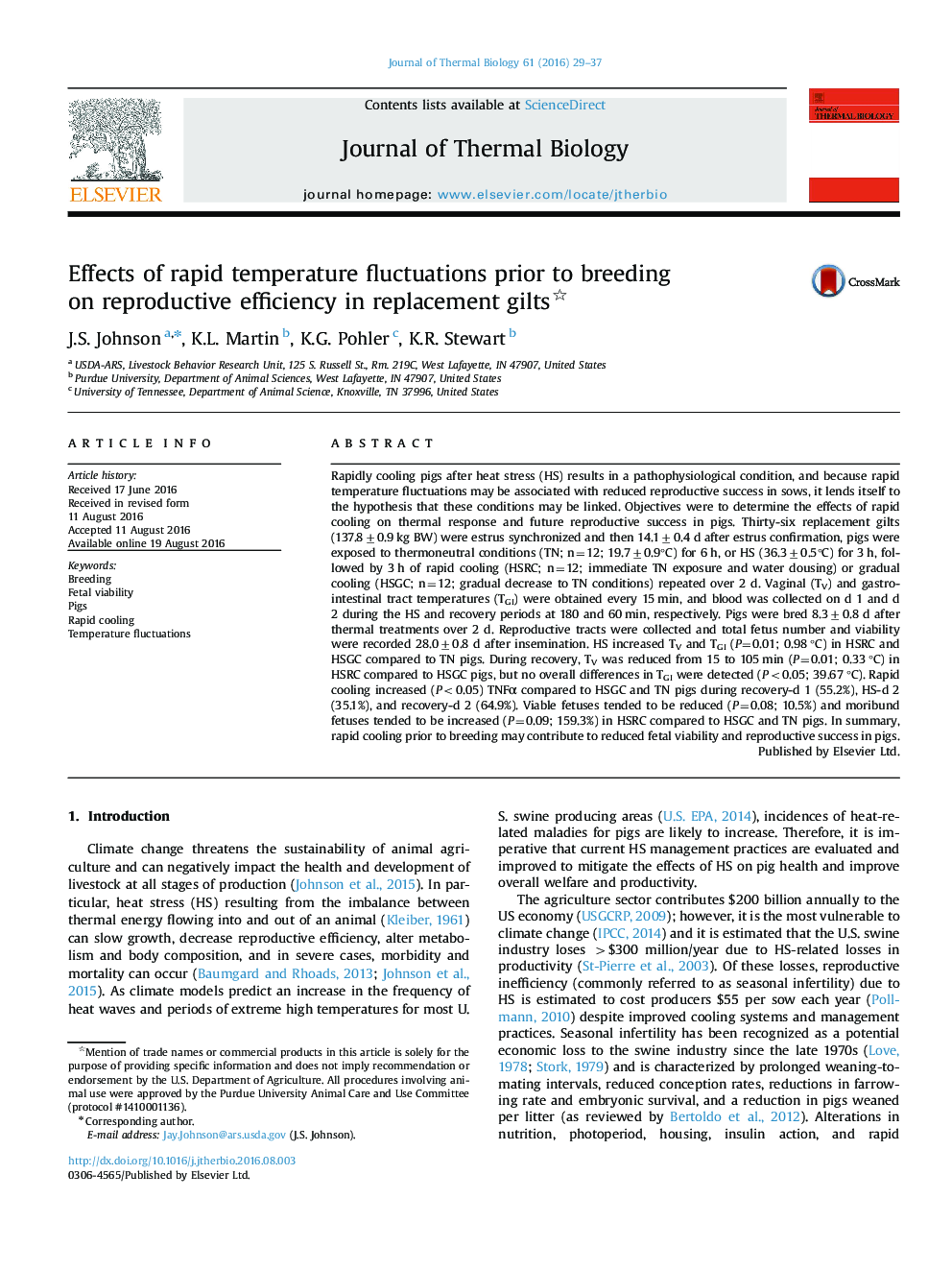| کد مقاله | کد نشریه | سال انتشار | مقاله انگلیسی | نسخه تمام متن |
|---|---|---|---|---|
| 2842641 | 1571085 | 2016 | 9 صفحه PDF | دانلود رایگان |
• Rapid cooling after acute heat stress reduced heat loss through the skin.
• Rapid cooling after acute heat stress increased circulating TNFα and insulin resistance.
• Heat stress exposure delayed the onset of estrus in replacement gilts.
• Acute heat stress and rapid cooling 8.3±0.8 d prior to breeding tended to reduce fetal viability in replacement gilts.
Rapidly cooling pigs after heat stress (HS) results in a pathophysiological condition, and because rapid temperature fluctuations may be associated with reduced reproductive success in sows, it lends itself to the hypothesis that these conditions may be linked. Objectives were to determine the effects of rapid cooling on thermal response and future reproductive success in pigs. Thirty-six replacement gilts (137.8±0.9 kg BW) were estrus synchronized and then 14.1±0.4 d after estrus confirmation, pigs were exposed to thermoneutral conditions (TN; n=12; 19.7±0.9°C) for 6 h, or HS (36.3±0.5°C) for 3 h, followed by 3 h of rapid cooling (HSRC; n=12; immediate TN exposure and water dousing) or gradual cooling (HSGC; n=12; gradual decrease to TN conditions) repeated over 2 d. Vaginal (TV) and gastrointestinal tract temperatures (TGI) were obtained every 15 min, and blood was collected on d 1 and d 2 during the HS and recovery periods at 180 and 60 min, respectively. Pigs were bred 8.3±0.8 d after thermal treatments over 2 d. Reproductive tracts were collected and total fetus number and viability were recorded 28.0±0.8 d after insemination. HS increased TV and TGI (P=0.01; 0.98 °C) in HSRC and HSGC compared to TN pigs. During recovery, TV was reduced from 15 to 105 min (P=0.01; 0.33 °C) in HSRC compared to HSGC pigs, but no overall differences in TGI were detected (P<0.05; 39.67 °C). Rapid cooling increased (P<0.05) TNFα compared to HSGC and TN pigs during recovery-d 1 (55.2%), HS-d 2 (35.1%), and recovery-d 2 (64.9%). Viable fetuses tended to be reduced (P=0.08; 10.5%) and moribund fetuses tended to be increased (P=0.09; 159.3%) in HSRC compared to HSGC and TN pigs. In summary, rapid cooling prior to breeding may contribute to reduced fetal viability and reproductive success in pigs.
Journal: Journal of Thermal Biology - Volume 61, October 2016, Pages 29–37
